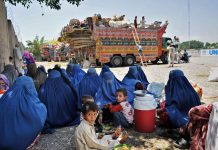Influenza, Covid-19, and respiratory syncytial are common viruses circulating in Nepal that lead to sickness and pneumonia. Likewise, Mycoplasma pneumonia and pneumococcus are common bacterial infections in the country that cause pneumonia, especially in children.
According to reports, the same viruses and bacteria are responsible for the ongoing outbreak of a mysterious pneumonia in northern China.
The World Health Organization on Wednesday made an official request to China for detailed information on the spike in respiratory illness and reported clusters of pneumonia in children.
Since mid-October, northern China has reported an increase in influenza-like illness compared to the same period in the previous three years, according to the UN health body. Chinese authorities attributed the increase to the lifting of Covid restrictions and the circulation of pathogens.
Health officials in Nepal said no agency alerted them to the mysterious outbreak of pneumonia in China. However, they say that they are aware of the news as well as the World Health Organisation’s request to the Chinese health authorities.
“All the said viruses and bacteria are common in our country and are in circulation,” said Dr Ranjan Bhatta, director at the National Public Health Laboratory. “We have been carrying out regular surveillance of those pathogens.”
October-November is the peak flu season in Nepal, and multiple respiratory viruses have been spreading. Major hospitals in Kathmandu reported infection of respiratory viruses—influenza A(H1N1), A (H3) and influenza B—have already shot up.
Though the Ministry of Health and Population has not reported a major spike in Covid cases, experts say the virus is still circulating in communities. As very few people in Nepal get flu shots, unvaccinated elderly people and those with compromised immunity will be at risk of getting severe infections of respiratory viruses, experts say.
Seasonal influenza causes respiratory complications, which affect the lungs. It quickly spreads in communities. The diseases can cause fever, cough, body aches, occasional vomiting, diarrhoea and pneumonia.
“We have to step up the surveillance in the country and keep close vigilance on new developments about the outbreaks in China,” said Dr Shrawan Kumar Mishra, director at the Provincial Public Health Laboratory of Madhesh Province. “The Central Lab (NPHL), which carries out testing of the respiratory syncytial virus, should closely monitor the situation if the virus is causing a rise in infection rate.”
Experts suggest authorities concerned carry out tests on samples for respiratory syncytial virus when the tests for influenza, Covid or other pathogens come back negative.
“We have been conducting respiratory syncytial virus testing on some samples,” said Bhatta. “If needed, we are ready to increase such tests.”
Experts say early diagnosis is crucial to preventing infection. Patients recover quickly if treated on time. Experts also said that both the severity of the disease and deaths increase if seasonal influenza cases are not diagnosed on time.
Public health measures—mask-wearing, handwashing, avoiding crowds, and maintaining social distancing—can cut down on infections, according to doctors.









































